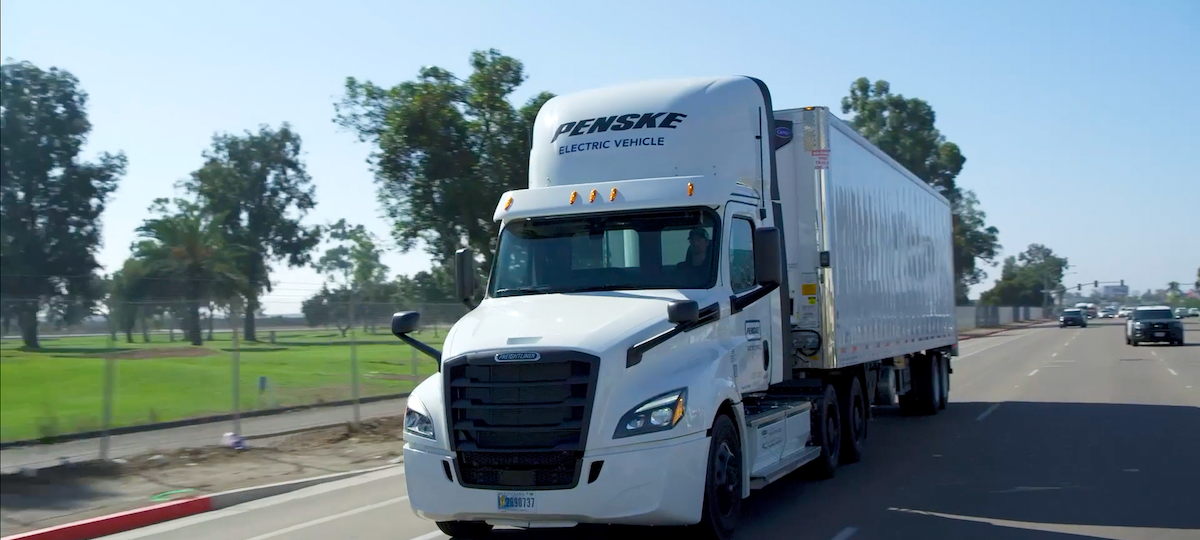
Reality Check: Electric Trucks Are Viable Today
The Myth
Many people think that electric trucks can’t do the job — they won’t have a long enough driving range, they will be too heavy, truckers won’t like them. However, that couldn’t be farther from the truth. “The framing of the problem is wrong,” says RMI Principal Dave Mullaney. While it’s true that there are certain things electric trucks can’t do, “not every truck has to be able to do every thing. Different trucks operate differently and there is opportunity in that diversity. While electric trucks might not yet be able to perform in all circumstances, they could effectively replace up to half of trucks on the road today.” he adds.
The Reality
Let’s look at the things trucks need to do and why electric trucks can do the job.
Distance
Trucks have to drive certain distances reliably. A recent RMI report showed that the majority of medium-duty trucks and about half of heavy-duty trucks in New York and California are driving short enough routes that they could be replaced with electric trucks that are on the market today. “Heavy-duty Class 8 tractors are the most challenging of all the truck segments considered for electrification,” said Rick Mihelic, director of emerging technologies at the North American Council for Freight Efficiency (NACFE). “Battery electric vehicles cannot replace all diesels, but they can replace a significant share of regional haul ones, where the driver and truck return to base each day, or where the daily distances are not very long.”
Freight
Trucks have to be able to carry heavy loads. While it’s true that electric trucks will be heavier, about 75 percent of the time, trucks fill up their cargo space before they reach their weight carrying capacity. Furthermore, there is a 2,000 pound federal weight exemption for electric vehicles to compensate for the heavier powertrain components, and California has also increased its weight limits.
Comfort
“A truck is also an office,” says Mullaney. “The operator has to be happy being in the cab, or else they just quit. Driver retention is a huge problem in trucking.” NACFE and RMI’s Run on Less – Electric trucking demonstration showed that drivers love electric trucks.
“They don’t vibrate, they don’t smell, they accelerate properly, so you’re not constantly the slow one in traffic off a red light,” says Mullaney. “Drivers don’t come home at the end of the day and feel exhausted or feel like they’ve been operating a jackhammer for the past eight hours.”
Donald Disesa, a driver for Penske agrees. “The truck is so quiet, everything is smooth. It gives you time to focus on what’s going on around you. With the diesel trucks there’s rattling, there’s driver fatigue, things you don’t even know are going on. But as soon as I got in the electric truck, I realized this is the way of the future,” he says.
Economics
Trucks need to make money for their operators. Unlike a car, a truck is an investment asset. Right now, it’s not all the way there. As batteries become cheaper and more efficient, the economics will get there. However, in the meantime, we need to create a framework to help improve the economics. We can look to California as a great model.
The state of California as well as its utilities have some programs that are making electric trucks economically viable:
These price incentives are greatly driving sales.
What’s Next? Looking Beyond the Vehicle
We now know that technically, the truck can do the job. “These things can go the distance, carry the weight, and keep the driver happy,” says Mullaney. “But for electric trucks to be successful, we have to look beyond the vehicle.”
One critical move is to strengthen the policy framework. Again, we can look to California. Besides the HVIP and LCFS, the state has two other regulations that are helping the market develop.
- The Advanced Clean Truck (ACT) regulation requires truck manufacturers to sell an increasing percentage of zero-emissions vehicles (ZEVs), so that by 2050, 100 percent of all new medium- and heavy-duty truck sales are ZEVs.
- The Advanced Clean Fleets regulation requires fleets to have an increasing percentage of their fleet be electric.
However, we can’t rely on California to pull these things over the line singlehandedly. Fortunately, other states are starting to act. Fourteen other states and Washington, D.C., signed a Memorandum of Understanding to comply with the ACT guidelines. This means that almost half of all trucks in the United States will fall under the ACT framework.
Yet, while policy is critical to accelerate adoption, it will only work if the electric grid can supply enough power to charge all these vehicles. Upgrading grid infrastructure is going to be key. “We know that the grid can eventually handle all the electric vehicles that are coming, but it will take time and money,” says RMI Managing Director Mark Dyson. “There are a lot of challenges ahead that, although not trivial, are not insurmountable.” Fortunately, there is a huge influx of new funding for US grid infrastructure, and with smart charging and new technologies, charging electric vehicles can actually become a grid asset.
So yes, electric trucks can do the job. And we are going to see a future where we move our freight with zero emissions. But transportation electrification is not just about the vehicle. We now need to strengthen both policy and the grid to get electric trucks over the finish line.
"electric" - Google News
May 26, 2022 at 05:03AM
https://ift.tt/c6fsOWS
Reality Check: Electric Trucks Are Viable Today - Rocky Mountain Institute
"electric" - Google News
https://ift.tt/SKd3pHb
https://ift.tt/v3JauhB
Bagikan Berita Ini














0 Response to "Reality Check: Electric Trucks Are Viable Today - Rocky Mountain Institute"
Post a Comment